Table of Contents
The Gupta Empire, thriving from around 320 to 550 CE, stands out as a prominent ancient Indian realm. Founded by Maharaja Sri Gupta, it holds a distinguished place among the great empires of ancient India, renowned for significant advancements in science, mathematics, literature, art, and architecture.
Gupta Empire, Golden Age of India
The Gupta Empire is often hailed as the “Golden Age of India” due to its numerous achievements. Characterized by a strong central government, a well-organized bureaucracy, and a thriving economy based on trade and agriculture, the empire experienced a period of unprecedented prosperity. The Gupta rulers were patrons of the arts, literature, and education, nurturing the rise of many distinguished scholars and thinkers. This fostered an era of intellectual and cultural richness, solidifying their legacy in Indian history.
Gupta Empire Rulers and Timeline
The Gupta Empire, a formidable ancient Indian dominion, held sway over a significant portion of the Indian subcontinent from approximately 320 to 550 CE. Sri Gupta, the founder, laid the foundation with a modest kingdom in the Magadha region of northeastern India. Through a combination of military conquests and strategic alliances with neighboring realms, the Gupta dynasty progressively expanded its territorial reach, ultimately establishing one of the most influential empires in Indian history.
Throughout its zenith, the Gupta Empire was steered by a succession of noteworthy rulers. Each emperor played a distinctive role in fostering the empire’s growth and prosperity. Their individual contributions left an enduring impact on Indian culture and society, shaping the historical narrative of this significant era.
Gupta Empire Rulers: Chandragupta I (320-335 CE)
Chandragupta I (320-335 CE) was the inaugural ruler of the Gupta Empire, credited with laying the foundations for its success. He expanded his realm by conquering neighboring states such as the Shakas and the Yaudheyas, and established Pataliputra as his capital. Chandragupta I was a notable patron of the arts and sciences, and a staunch supporter of Hinduism.
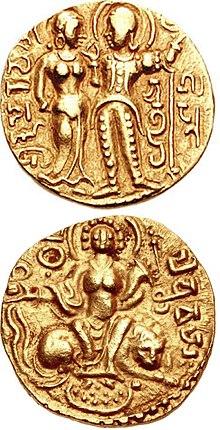
Gupta Empire Rulers- Samudragupta (335-375 CE)
Chandragupta I was succeeded by his son, Samudragupta (335-375 CE), who is widely considered to be one of the greatest rulers in Indian history. Samudragupta continued his father’s military expansion, conquering a vast swath of territory that extended from present-day Afghanistan to Bangladesh. He was also a patron of the arts, and is said to have been a gifted musician and poet.
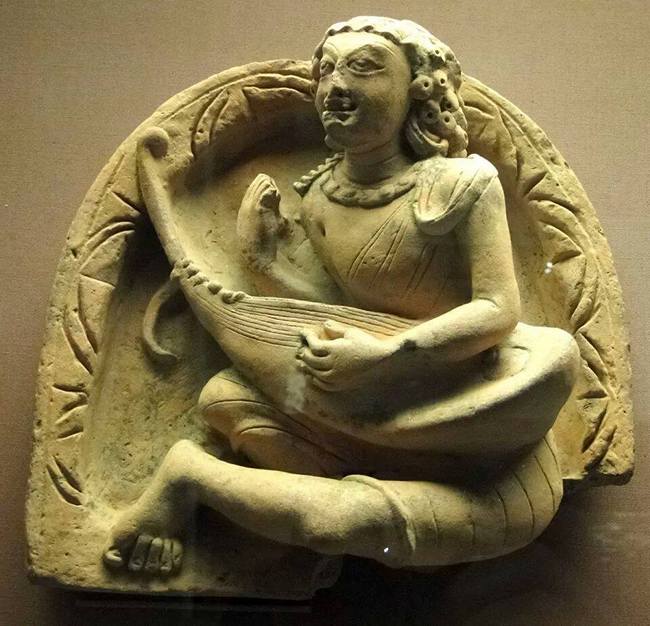
Gupta Empire Rulers- Chandragupta II (375-415 CE)
Following the death of Samudragupta, his son Chandragupta II (375-415 CE) ascended to the throne. Chandragupta II is perhaps best known for his military campaigns against the Shakas and the Pahlavas, which solidified the Gupta Empire’s dominance over much of northern India. He was also a patron of the arts, and his court was home to many great poets, musicians, and scholars.
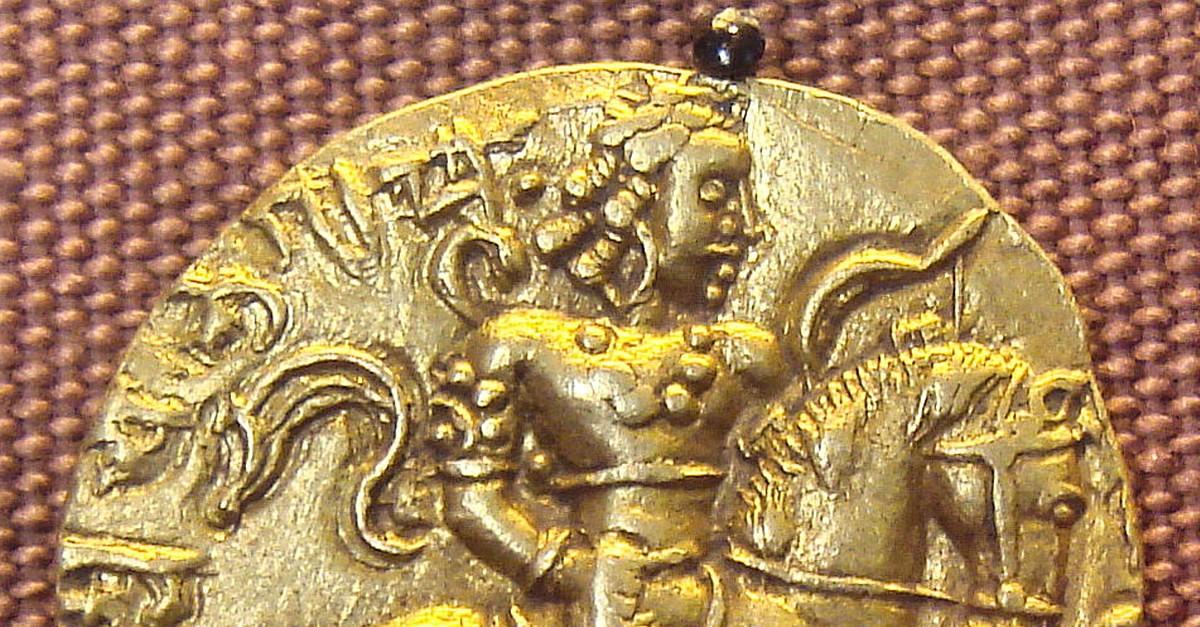
Gupta Empire Rulers- Kumaragupta I (415-455 CE)
Chandragupta II was succeeded by his son, Kumaragupta I (415-455 CE), who continued the empire’s expansion through a series of military conquests. Kumaragupta I was also a patron of the arts, and his court was home to several prominent scholars and intellectuals.
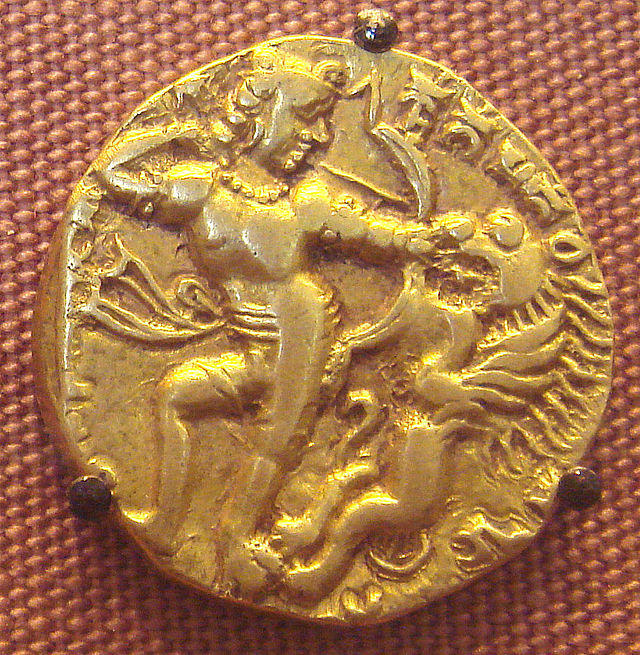
Gupta Empire Rulers- Skandagupta (455-467 CE)
The final notable ruler of the Gupta Empire was Skandagupta (455-467 CE), who is credited with repelling a series of invasions by the Huns. Skandagupta was also a patron of the arts, and his court was home to several great poets and musicians.
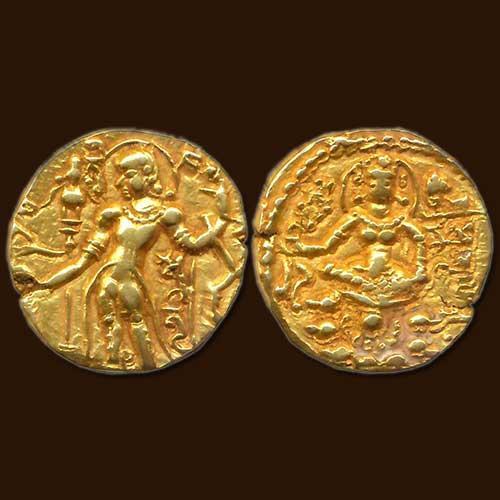
The Gupta Empire declined rapidly following the death of Skandagupta, and was eventually supplanted by the Pala Empire in the 8th century CE. Nevertheless, the Gupta rulers left a lasting legacy in Indian history, and their contributions to the arts, sciences, and military strategy continue to be celebrated to this day.
Gupta Empire Capital
Spanning from the 4th to the 6th century AD, the Gupta Empire stands as a noteworthy ancient Indian dominion. Established by Sri Gupta, the empire endured for approximately 230 years, marking a significant chapter in Indian history. Recognized as one of the paramount and influential empires of ancient India, the Gupta Empire owes much of its prominence to its capital, a vital center that contributed immensely to the empire’s development and expansion.
Gupta Empire Capital- Pataliputra
The capital of the Gupta Empire was initially at Pataliputra, which is located in modern-day Bihar, India. Pataliputra had been the capital of several previous Indian empires, including the Maurya and Shunga Empires. The city was strategically located on the banks of the Ganges River, which made it an important center for trade and commerce. The Gupta rulers recognized the importance of Pataliputra and continued to use it as their capital for the first few decades of the empire.
Gupta Empire Capital- Ujjain
However, in the 5th century AD, the Gupta Empire’s capital was moved to a new city called Ujjain. Ujjain is located in the present-day Indian state of Madhya Pradesh and is situated on the banks of the Shipra River. The city was already an important trading center and was known for its astronomical observatory, which was used to study and predict celestial events. The Gupta rulers recognized the importance of Ujjain and saw it as a more strategic location for their capital.
- Ujjain became the center of the Gupta Empire and was a thriving cultural, religious, and commercial hub.
- The city was home to several important temples and was a center for learning and scholarship.
- The famous poet and playwright Kalidasa lived and worked in Ujjain during the reign of the Gupta Emperor Chandragupta II.
- Ujjain was also an important center for trade, and the city’s location at the intersection of several major trade routes made it a hub for commerce and exchange.
- One of the most significant aspects of Ujjain was its strategic location.
- The city was situated at the crossroads of several major trade routes, which made it an important center for commerce and exchange.
- The Gupta Empire was able to use Ujjain’s strategic location to expand its influence and control over neighboring regions.
- The city also served as a vital military base, as it was situated at a crucial point on the empire’s northern border.
Gupta Empire Capital- Role in Growth of Gupta Empire
- The Gupta Empire’s capital played a crucial role in the empire’s success and growth.
- The city of Ujjain was strategically located and provided the empire with access to important trade routes and military advantages.
- The city was also a center for learning, scholarship, and culture, which helped to foster the development of art, literature, and science.
- Today, Ujjain is still an important city in India and is known for its cultural heritage and religious significance.
- The capital of the Gupta Empire was an important center for trade, commerce, culture, and learning.
- The city of Ujjain provided the empire with strategic advantages and helped to facilitate its growth and success.
- The Gupta Empire’s capital remains an important part of India’s rich cultural heritage and serves as a testament to the achievements and accomplishments of one of India’s greatest empires.
Gupta Empire Achievements
Some of the notable achievements of the Gupta Empire include the development of the decimal system and the concept of zero in mathematics, the invention of the iron pillar, which is still standing in Delhi today, and the construction of great works of art and architecture, such as the Ajanta and Ellora caves.
Decline of Gupta Empire
The Gupta Empire was one of the most significant empires in ancient India, lasting from 320 CE to 550 CE. During this period, the Gupta dynasty achieved great accomplishments in the areas of art, literature, science, and philosophy, making it a Golden Age in Indian history. However, the Gupta Empire eventually declined and collapsed, and historians have identified several factors that contributed to its downfall.
Factors of Decline of Gupta Empire: Huna Tribe
One of the primary causes of the Gupta Empire’s decline was the invasion of the Huna tribe. The Huna tribe was a nomadic tribe from Central Asia that had migrated to India during the Gupta period. Initially, the Hunas were allies of the Gupta Empire, and they even fought together against other enemies. However, in the later years of the Gupta dynasty, the Hunas turned against the empire and launched a series of devastating attacks. The Hunas were fierce warriors, and their attacks weakened the Gupta Empire’s military power, leading to the empire’s eventual collapse.
Factors of Decline of Gupta Empire: Rise of Regional Kingdoms
Another factor that contributed to the Gupta Empire’s decline was the rise of regional kingdoms. During the later years of the Gupta period, various regions of India began to assert their independence from the Gupta Empire. These regions were ruled by local kings who often challenged Gupta authority and refused to pay taxes. As a result, the Gupta Empire’s power gradually weakened, and it was unable to maintain its hold over these regions.
Factors of Decline of Gupta Empire: Economic Crisis
Additionally, the Gupta Empire’s economy also suffered during its later years. The empire’s extensive trade networks began to decline, and there was a shortage of precious metals, which were used as currency. This led to inflation, which further weakened the empire’s economy. Furthermore, the Gupta Empire’s taxation policies were also a source of discontent among the people, who felt overburdened by the high taxes levied by the empire.
Factors of Decline of Gupta Empire: Internal Conflicts
The Gupta Empire’s decline was also hastened by the internal conflicts among its rulers. After the death of Skandagupta, the Gupta Empire’s last strong ruler, several weak rulers were unable to maintain the empire’s unity. These internal conflicts weakened the empire and made it vulnerable to external attacks.
In conclusion, the Gupta Empire’s decline was the result of a combination of factors, including external invasions, the rise of regional kingdoms, economic decline, and internal conflicts. While the Gupta dynasty achieved great heights during its Golden Age, these factors eventually led to its collapse. Nevertheless, the Gupta Empire’s legacy lives on in the form of its numerous cultural achievements, which continue to inspire people to this day.
India Post Gupta Empire
The Gupta Empire, which was one of the most powerful empires in India, came to an end in the mid-sixth century. The period that followed, which lasted until the 13th century, is known as the Post-Gupta period. This era saw significant changes in Indian society, politics, and culture. In this article, we will delve into the various aspects of India during the Post-Gupta Empire.
India Post Gupta Empire: Political Scenario
- The Post-Gupta period saw the emergence of several regional kingdoms that competed for power and territory.
- The most significant of these kingdoms were the Chalukyas, the Pallavas, the Rashtrakutas, the Cholas, and the Pandyas.
- These kingdoms were known for their military prowess, administrative efficiency, and cultural achievements.
- The Chalukyas, for instance, built some of the most magnificent temples in southern India, while the Rashtrakutas were known for their patronage of art and literature.
- The political instability of this era also led to the rise of feudalism in India.
- Feudal lords, who controlled vast tracts of land, had significant power and influence in society.
- They were responsible for maintaining law and order in their territories and providing protection to their subjects.
India Post Gupta Empire: Social and Economic Scenario
- The Post-Gupta period saw significant changes in Indian society.
- The caste system, which was a defining feature of Indian society, became more rigid during this period.
- The upper castes, especially the Brahmins, became more powerful and influential, while the lower castes were subjected to discrimination and oppression.
- The economy of India during this period was primarily agrarian, with agriculture being the mainstay of the economy.
- The feudal lords, who controlled vast tracts of land, were responsible for agricultural production.
- Trade and commerce also played an essential role in the economy, with India being a significant center of trade in the ancient world.
India Post Gupta Empire: Religious and Cultural Scenario
- The Post-Gupta period saw the emergence of several new religions in India.
- Buddhism, which had been in decline during the Gupta Empire, experienced a revival during this period.
- Jainism also gained prominence during this era, with several Jain scholars and philosophers making significant contributions to Indian thought and culture.
- The most significant cultural achievement of the Post-Gupta period was the development of Indian art and architecture.
- The Chalukyas, for instance, built some of the most magnificent temples in India, such as the famous temple at Pattadakal.
- The Pallavas also made significant contributions to Indian art and architecture, with their famous rock-cut temples at Mahabalipuram being a testament to their architectural prowess.
India Post Gupta Empire: Overall
In conclusion, the Post-Gupta period was a significant era in Indian history, marked by political instability, social and economic changes, and cultural achievements. This period saw the emergence of several regional kingdoms, the rise of feudalism, and the development of Indian art and architecture. The period also witnessed the emergence of new religions and the revival of Buddhism. Despite the challenges and changes that India faced during this period, it continued to be a significant center of trade, commerce, and culture in the ancient world.
Check: All UPSC History Notes



 TSPSC Group 1 Question Paper 2024, Downl...
TSPSC Group 1 Question Paper 2024, Downl...
 TSPSC Group 1 Answer key 2024 Out, Downl...
TSPSC Group 1 Answer key 2024 Out, Downl...
 UPSC Prelims 2024 Question Paper, Downlo...
UPSC Prelims 2024 Question Paper, Downlo...
